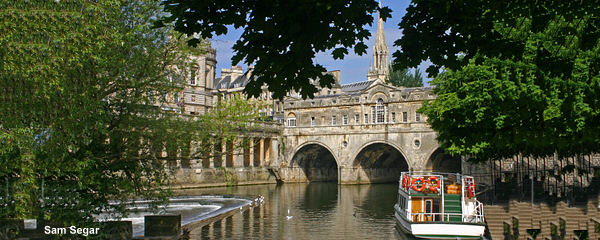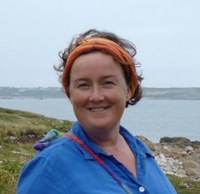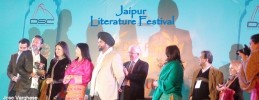
photo by Sam Segar
by Clare Reddaway
I know I am not alone in finding that my surroundings inspire my writing. When I was caught in a storm on the Isles of Scilly I wrote a short ghost story about a ship lost at sea. When I was living in the feverish, sweltery heat of Hong Kong, I wrote a play about an outbreak of plague there in 1899. However, I have recently been involved in a couple of projects that take this idea really quite a lot further.
I have been working with Heads and Tales, a live short fiction group operating in the south-west. We have been fortunate enough to get funding from both Bristol and Bath councils to create story walks in those cities. These are audio stories which are downloadable onto an ipod or MP3 player. The listener takes a walk with the character in the story, exploring the city and enjoying a good tale at the same time.
This sounds great in theory, but boy is it hard to do. The main difficulty is that the story has to fit the walk. I am used to structuring a story according to a dramatic curve dictated by the story events – not by how long it might take the average person to get from the gate of the park to the main road. I am used to starting and stopping a story where I choose, but these stories must finish when a walk reaches a significant point. They cannot just stop, leaving the walker poised mid-step in Morrisons’ car park.
There are obvious dangers here. As a writer, it is very easy to resort to padding. For instance, in a first draft I found myself describing the route that the walker could already see. I also had the character remarking on the houses he passed, even though he lived nearby and walked that route every day, so would be extremely unlikely in the world of the story to make any such comments. It was hard but necessary to be as rigorous as with a ‘normal’ short story to ensure that every sentence worked either to convey character or advance the action.
There is also the ever-present threat of clunkiness. I found myself in a tangle of direction-writing: ‘take the left turning, not the one straight ahead but a bit to the right by the blue door…’ Too much of that and you have lost your listener’s interest. I had another issue with directions in my Bath story in which the main character is transported back into Roman times so there were no landmarks that could root her or my listener-walker in the present landscape. I had to hope that the walker would plod on, regardless, and trust me to let them know somehow where they needed to turn.
I set myself a particularly challenging problem as part of the Bristol project when I decided to write a sensory story, specifically aimed at the visually impaired. This required the usual descriptions as well as instructions for the listener/walker to rub herbs for the smell or to trail their fingers over stonework and carvings – all of which had to be embedded in the actions of Gerard, the main character. Gerard eventually sank, exhausted, onto a bench to experience the end of the story.
Then there are the unforeseen problems. My Bath story began in a park by an oak tree. The oak was significant, tying in a Roman slave girl’s Druidic past and the appearance of a mythical creature to my main character, Maeve. There were references to oaks throughout the story – if I was to be pretentious, I might even say the oak was a motif. Then, as we were about to record, the photographer rang me: ‘Clare, you do know the oak is condemned and is about to be cut down, don’t you?’
I didn’t. It had been there for over 100 years, yet this particular month was chosen for it to go. So what if it was rotting from the inside and about to fall down? It looked OK to me. Feeling that the gods were against me, I scoured the park for other suitable trees, but the chestnuts and dwarf weeping ashes didn’t have the right resonance. Eventually, I changed the entire beginning of the story to a series of linked ponds elsewhere in the park. The change had been thrust upon me by circumstances – but it worked. And the story might even be better than when it featured my beloved oak motif.
These are some of the problems, but the positives about writing these stories far outweigh the teething difficulties. I enjoy weaving fact into fiction, and this was a great opportunity to do so. I feel enriched by the research that I did. The Bath story was set in my local area, and I now see my main road, grimy and clogged with traffic as it is today, as a palimpsest of former glories, trodden on by monarchs and Romans, Saxons and slaves. I am now a bit of an authority on the Knights Templar, the subject of my Bristol story. Did you know that they considered shoe laces to be dangerously pagan?
I have also found that what I initially thought of as a restriction became a challenge, like the competitions that suggest writing a story in 50 characters or ask for a gothic-horror in 100 words. It has been a rigorous exercise in discipline to wrestle each story into the appropriate shape and length, and has proved to be a useful skill. I look at some of my other stories which now seem loose and baggy in comparison. They could do with some wrestling.
However, one of the best things about the projects is how very different all of the stories are. In Bath, three writers walked the same streets, and came up with stories about the nature of the element carbon, Roman slaves and a bewitching missing cat. In Bristol there were more story walks and the variety is even greater, from talking graffiti to world war two chocolate factories. The stories demonstrate the wide range of writers’ imaginations. Most importantly, people enjoy them.
Site specific writing is not for everyone. Some might find it too restrictive, too pedestrian or to require too much research. However, for anyone who has never tried, I would recommend giving it a go. You might find that there is much to inspire you just around your own corner.
*
 CLARE REDDAWAY writes short stories and scripts for adults and children. Her work has been published in anthologies, in magazines and on the web, and has been broadcast on local radio. Her scripts have been produced in the theatre and as audio drama. She has an MA in Creative Writing from Bath Spa University.
CLARE REDDAWAY writes short stories and scripts for adults and children. Her work has been published in anthologies, in magazines and on the web, and has been broadcast on local radio. Her scripts have been produced in the theatre and as audio drama. She has an MA in Creative Writing from Bath Spa University.


Wow, what a fantastic idea – although it sounds impossibly difficult to do! I live in Bristol and I’m really looking forward to downloading and doing one of the walks. Thanks for sharing.